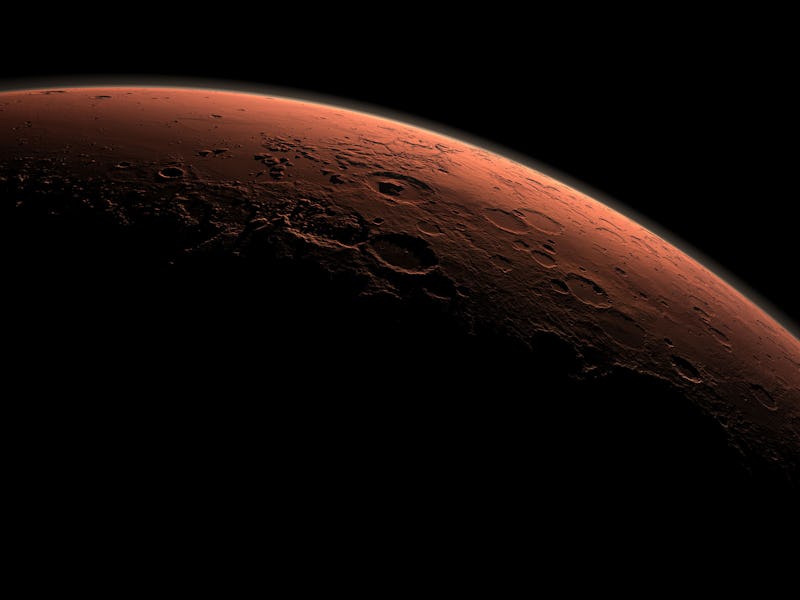There may not be life on Mars — certainly, whatever else you may hear, there’s no evidence for it — but the red planet is positively teeming with the building blocks of life, specifically the carbon molecules that are the basis of all known organic material.
The big unanswered question is just where all those organic particles come from. An international team led by astronomers at SRON Netherlands Institute for Space Research published a paper this week in the journal Icarus that suggests asteroids and comets are the main bringers of these all-important carbon molecules — which could be very good news for the prospect of life on planets in other solar systems.
Join our private Dope Space Pics group on Facebook for more strange wonder.
Until now, researchers had assumed interplanetary dust particles brought organic material to the otherwise barren Mars, but this team was skeptical that these dust clouds were the sole culprit. Using the supercomputer Peregrine, they spent weeks running a simulation of the hundreds of thousands of comets and asteroids in the solar system in order to determine how many collided with Mars and other bodies.
While the red planet didn’t experience the most collisions — bigger planets like Jupiter, Saturn, Earth, and Venus all had far more — the simulations still deposited the equivalent of 192 tons of carbon each year. About two thirds of that came from dust particles, a quarter from asteroids, and the final seven percent from comets.
The frequency with which carbon ends up on the Martian surface is encouraging news for the possibility of life on exoplanets, University of Groningen researcher Kateryna Frantseva said in a statement.
“Near other stars, there are also exo-asteroids and exocomets that can shower the surfaces of exoplanets with carbon,” she said. “If, on top of that, there is water, then you have the required ingredients for life.”
This also offers a pretty gigantic clue as to where future Martian rover missions would want to head in search of organic material, as asteroid and comet impact craters are likely teeming with carbon molecules.
That might also mean future crewed missions, whether from government agencies like NASA or private companies like SpaceX, would do well to avoid areas those same impact zones, if only to marginally reduce the risk of contaminating the planet’s existing biological building blocks.
